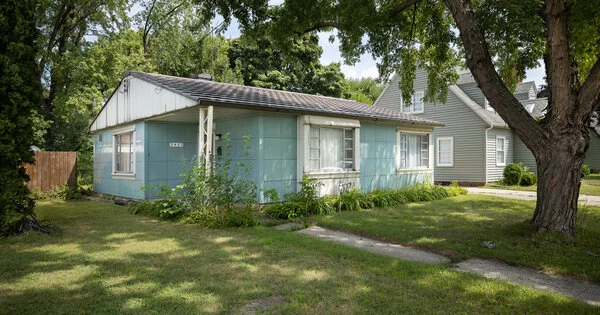Lustron houses are prefabricated enameled steel houses developed in the post-World War II United States by Chicago industrialist and inventor Carl Strandlund in response to a housing shortage for returning G.I.s. These are a type of prefabricated steel home that was manufactured in the United States between 1947 and 1950. They were expected to attract modern families who did not have the time or interest in repairing and painting traditional wood and plaster houses because they were low-maintenance and extremely durable. They were manufactured by the Lustron Corporation, which was founded by Carl Strandlund.
Lustron houses were intended to be low-maintenance, long-lasting housing solutions for post-World War II America. Lustron production ceased in 1950 due to the company’s inability to repay the Reconstruction Finance Corporation startup loans. During the Lustron’s brief production run, over 2,000 homes were built, many of which are still in use today. A number of them have been listed on the National Register of Historic Places.
The Lustron Corporation aimed to address the post-war housing shortage by providing easily assembled, ready-to-live-in homes. These houses were built with prefabricated steel panels that were coated with porcelain enamel on both sides. The enamel finish gave the houses a distinct appearance and made them resistant to fire, rust, and other forms of damage.
Lustron houses were available in four models: the Westchester, the Newport, the Meadowbrook, and the Arlington. They typically had two bedrooms, a living room, a kitchen, and a bathroom. The interiors featured built-in furniture, including closets, bookshelves, and cabinets. The houses also included several innovative features for the time, such as radiant heating in the ceiling, built-in clotheslines, and metal ceilings.
Despite the benefits of Lustron Homes, the company encountered numerous challenges. Due to manufacturing and logistical issues, production costs were high, and the company struggled to meet demand. There were also difficulties in obtaining adequate financing and dealing with labor disputes. The Lustron Corporation eventually declared bankruptcy in 1950, and production of Lustron houses ceased.
Lustron houses are now regarded as historical artifacts and collectibles. Many of these houses are still standing and are treasured by homeowners and enthusiasts who value their distinctive design and historical significance. They serve as a reminder of a unique approach to housing during a specific period in American history.
















